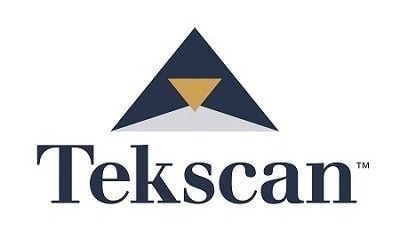In this interview, Camilo Aladro, the Director of Product Development and Marketing at Tekscan, talks to AzoSensors about opportunities for engineers to utilize thin force and pressure mapping technologies in R&D, and as an integrated solution to create innovative, force-driven applications.
Can you give us a brief history of Tekscan, the types of products you produce, and customers you serve?
Tekscan was founded in 1985 by researchers at MIT’s AI lab who had developed a novel ultra-thin, foldable pressure sensor developed with an etched flex circuit and hand-painted resistive ink. The first iteration of this technology was actually developed for the dental industry, known today as the T-Scan™ system. This system was comprised of an ultra-thin sensor connected to a hand piece and an analysis software to measure the bite force and timing of a patient. In the early 1990s, Tekscan began to branch out into other industries, marketing this technology as an R&D instrumentation tool to help engineers and designers solve challenges and obtain insights relating to interface pressure.
Over the years, we have invested in R&D and modernized our manufacturing processes, which has allowed us to expand our sensor and system portfolio to serve many industries and unique applications. The I-Scan™ system is Tekscan’s core general-purpose pressure mapping system that has been used by thousands of customers around the world. Some I-Scan applications range from automotive design, machine alignment, human biomechanics research, and even ergonomic studies.
Along with our turnkey pressure mapping systems, we also produce sensors for OEMs to embed into their products and devices. The thin and flexible properties of our sensor, combined with its ability to function on a simple, low-power electronics, makes this a design-friendly component for engineers to integrate force-sensing features and create new applications without adding bulk or complexity to their design.
Tekscan produces all sensors and systems at our manufacturing facility in Boston, MA. We continue to 100-percent test all sensors before they ship to customers. This dedication to quality, along with our applications engineering expertise and longevity in the market, separates us from similar sensor suppliers.
Tell us about any recent innovations Tekscan has brought to the force & pressure sensor market?
We just introduced I-Scan 9, a brand new software interface for the I-Scan system I mentioned earlier. I-Scan 9 has an entirely new display that allows users to manage their workspace with greater ease, and improve their productivity. This was a monumental effort – driven primarily by feedback from our customers – to modernize the UX and streamline analysis tools.
All I-Scan users, regardless of industry or application, will benefit from many of the new usability features in I-Scan 9. However, those with applications requiring the analysis of multiple data sets simultaneously, or applications requiring multiple sensors to analyze a large area, will especially appreciate these improvements.
For instance, one of our customers was team of engineers developing a faster-charging lithium-ion battery design. They were initially using our technology to measure battery swelling dynamics that can occur when charging and discharging over multiple cycles. They have many tests to run for weeks of even months. The streamlined procedures will make the data collection process more efficient and allow them to focus on the insights from the data.
We will eventually implement this new interface into our other application-specific systems in the coming years, as well.
How to Verify Lithium Ion Battery Housing Design with the I-Scan System
Where are you seeing significant opportunities for piezoresistive force & pressure sensing technology?
The opportunities for this technology are truly endless. Whether you’re measuring pressure distribution between two surfaces, obtaining quantitative data on objects colliding with one another, or seeking a tool to verify your finite element analysis model, then pressure mapping technology may be your solution.
In terms of product development and R&D, recently we have had a few customers whose pressure mapping insights from their R&D process directly led them to integrate our sensors into their final product, creating a value-added application for the end user.
An equipment manufacturer was using an I-Scan system to align the probing components on a semiconductor testing machine. As customers were seeing alignment issues over time, their quality manager had an idea to reduce their support costs and bring value to their machine, by creating an alignment tool add-on for their system.
The group worked with our applications engineering team to develop a custom matrix sensor designed to match the form factor of their probe card. This was also useful for them on the R&D side. In parallel, they used our Software Development Kit (SDK) to embed pressure mapping capabilities in their machine. The SDK is an API that allows the user to develop an application which can interface with Tekscan Pressure mapping systems. There they could customize the display and configure logic that will aid an operator trying to set up the machine.
This is just one of several examples where our user’s pressure mapping discoveries “mapped the path” to a new advancement or application, making their product smarter, or giving their design a competitive edge.
In terms of quality control, a huge area of opportunity for manufacturers is adopting pressure mapping technology to help them standardize and streamline their processes, whether in response to directives from regulatory agencies or as part of their own efforts to reduce errors in manufacturing. We are seeing manufacturers with multiple factory locations implement global initiatives to accomplish this. Using our sensors and electronics, they take an API we provide and customize software output to allow their production staff to visually validate machine setup. Time is money, and streamlining processes like this presents major savings of both.
We’ve worked with countless engineers and designers through their sensor integration process over the last decades, and if there’s one thing we know about this group, is that they generally like to figure things out on their own. That’s why we aim to provide them of the integration tools and resources they need to be successful when working with our technology. Our team of applications engineers are always standing by to offer guidance and support throughout this process.
Tekscan Pressure Mapping SDK - Integrate Pressure Mapping Capabilities into Your Design
What do you consider to be the most promising end-user markets for this technology?
Automotive, semiconductor, food packaging, and medical devices have always been strong markets for us, but truthfully, there really are no limits when it comes to applications for piezoresistive force & pressure sensing technology. The core technology is very versatile. The focus these days is on making sensor technologies that are more flexible and stretchable that can also function in harsh environments (high temperature, high humidity, etc.).
What separates one sensor supplier from another really comes down to setting the engineer up for success for their unique application. This includes the availability integration tools, resources, and applications engineering assistance that can help the engineer stay successful through all phases of their design.
Where can readers find more information?
Learn more about Tekscan technology by visiting www.tekscan.com. Or, to see a demonstration of the new I-Scan 9 interface, visit www.tekscan.com/i-scan.
About Tekscan
Tekscan's patented tactile force and pressure sensing solutions provide customers with the actionable information they need to optimize product design and improve clinical and research outcomes.
Our sensors and systems are used across a wide range of applications within test and measurement, medical, dental, and retail; as stand-alone solutions or as embedded technologies, to create better and differentiated products. Our passion for innovation, broad expertise, and commitment to quality help turn your vision into reality.
About Camilo Aladro
Camilo Aladro is the Director of Product Development & Marketing with Tekscan, Inc. Camilo specializes in tactile pressure measurement for manufacturing, R&D and quality assurance.
Prior to this role, he spent seven years with Rockwell Automation as a product manager within the sensing, safety and connectivity business, where he managed products designed to meet the latest EN and ISO standards for industrial automation. Camilo holds a BSME degree from the Massachusetts Institute of Technology.

This information has been sourced, reviewed and adapted from materials provided by Tekscan, Inc.
For more information on this source, please visit Tekscan, Inc.
Disclaimer: The views expressed here are those of the interviewee and do not necessarily represent the views of AZoM.com Limited (T/A) AZoNetwork, the owner and operator of this website. This disclaimer forms part of the Terms and Conditions of use of this website.